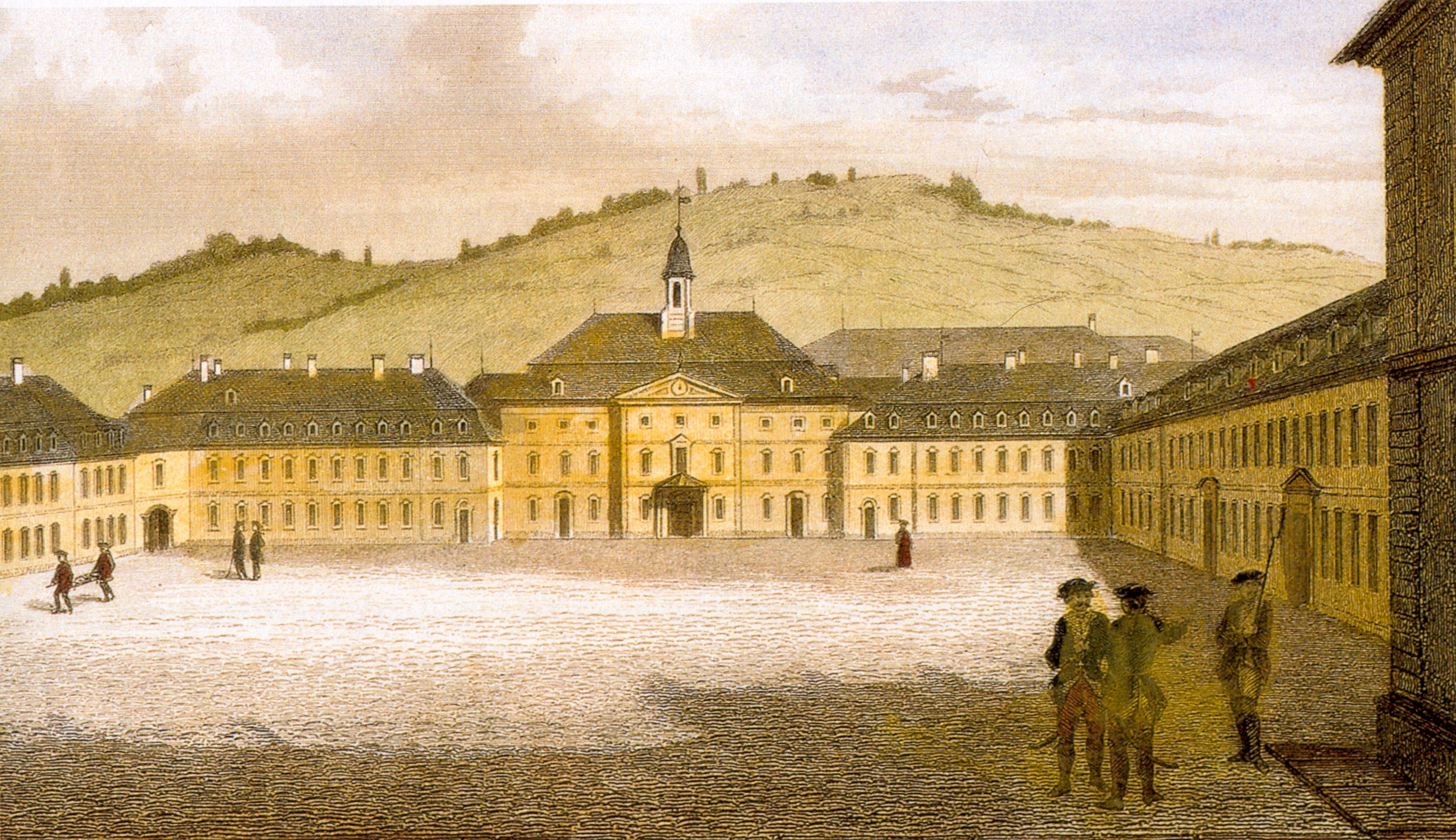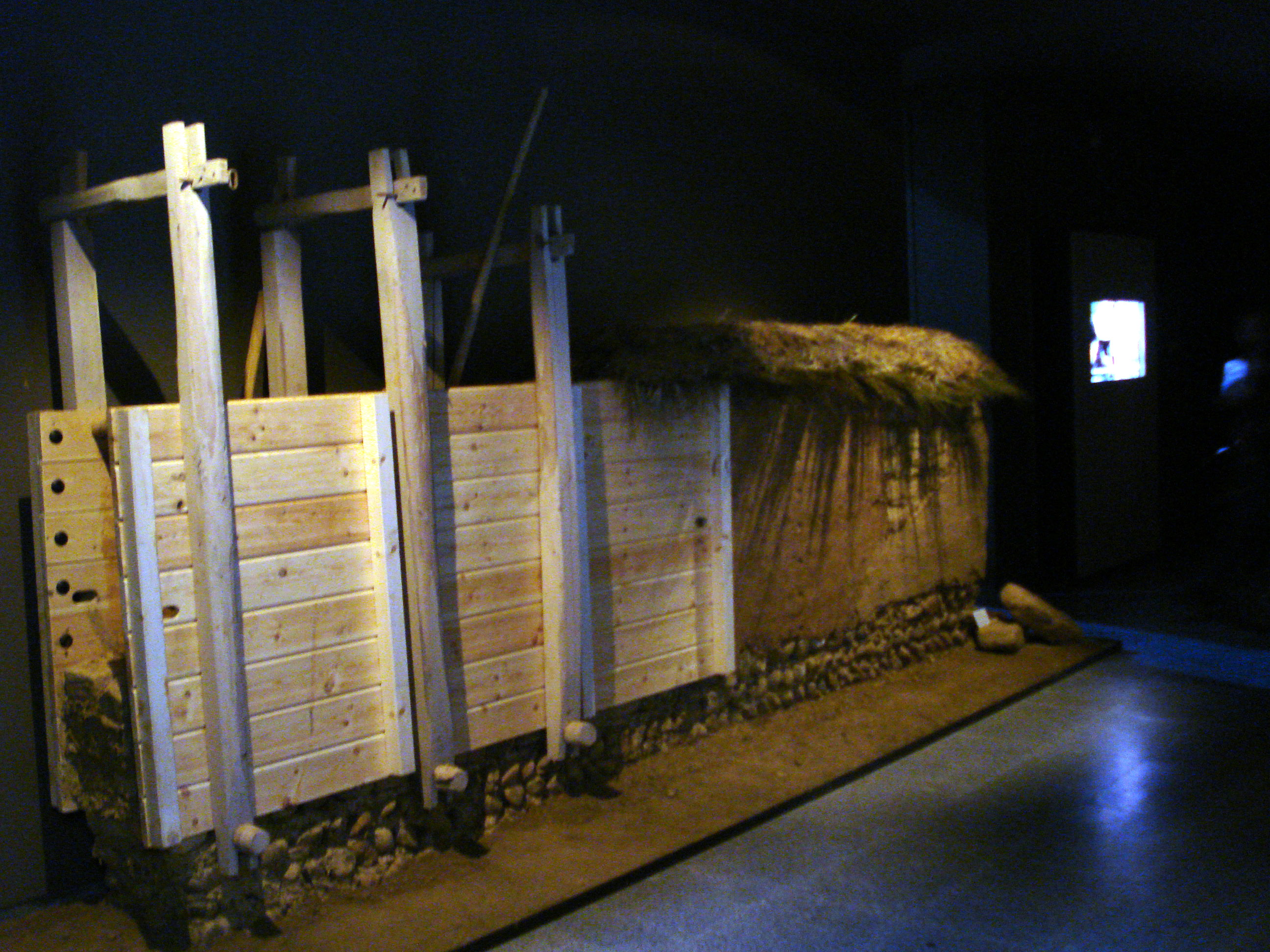|
Christian Zais
Christian Zais (4 March 1770 – 26 April 1820) was a German architect and city planner. Zai was born in Cannstatt, studied at the Karlsschule Stuttgart, and was taught by Karl August Friedrich von Duttenhofer and Johann Jakob Atzel. He designed several buildings in the spa city of Wiesbaden. Work Christian Zais' work characterizes the inner city of Wiesbaden with his lasting urban design. Zais designed a number of important buildings in the spa town, including the construction (1808-1811) of the Old Kurhaus Wiesbaden, the Erbprinzenpalais at Wilhelmstrasse (used today as the Chamber of Commerce) in 1813, and the Four Seasons hotel which was destroyed during Allied bombings in 1945. He promoted the use of cheaper materials at the time, including extensive use of rammed earth; some of these constructions remain to this day. 1818 saw Zais develop a city master plan for the "enlargement and beautification of the city"; the plan included surrounding the city's historic district ... [...More Info...] [...Related Items...] OR: [Wikipedia] [Google] [Baidu] |
Cannstatt
Bad Cannstatt, also called Cannstatt (until July 23, 1933) or Kannstadt (until 1900), is one of the outer stadtbezirke, or city boroughs, of Stuttgart in Baden-Württemberg, Germany. Bad Cannstatt is the oldest and most populous of Stuttgart's boroughs, and one of the most historically significant towns in the area of Stuttgart. The town is home to the Cannstatter Wasen and Cannstatter Volksfest beer festivals, the Mercedes-Benz Arena (VfB Stuttgart), the Hanns-Martin-Schleyer-Halle, and the Porsche-Arena. Name Bad Cannstatt's name originates from a ''Castra stativa'', Cannstatt Castrum, the massive Roman Castra that was erected on the hilly ridge in AD 90 to protect the valuable river crossing and local trade. In the past, Bad Cannstatt has been known as simply Cannstatt or ''Kannstatt'', ''Cannstadt'', ''Canstatt'', ''Kanstatt'', and ''Condistat''. Its name was changed to include "''Bad''" (german: Bath) to mention the town's spas on 23 July 1933. History Bad Cannstatt ... [...More Info...] [...Related Items...] OR: [Wikipedia] [Google] [Baidu] |
Wiesbaden
Wiesbaden () is a city in central western Germany and the capital of the state of Hesse. , it had 290,955 inhabitants, plus approximately 21,000 United States citizens (mostly associated with the United States Army). The Wiesbaden urban area is home to approximately 560,000 people. Wiesbaden is the second-largest city in Hesse after Frankfurt, Frankfurt am Main. The city, together with nearby Frankfurt am Main, Darmstadt, and Mainz, is part of the Frankfurt Rhine Main Region, a metropolitan area with a combined population of about 5.8 million people. Wiesbaden is one of the oldest spa towns in Europe. Its name translates to "meadow baths", a reference to its famed hot springs. It is also internationally famous for its architecture and climate—it is also called the "Nice of the North" in reference to the city in France. At one time, Wiesbaden had 26 hot springs. , fourteen of the springs are still flowing. In 1970, the town hosted the tenth ''Hessentag Landesfest'' (En ... [...More Info...] [...Related Items...] OR: [Wikipedia] [Google] [Baidu] |
Wilhelmstrasse
Wilhelmstrasse (german: Wilhelmstraße, see ß) is a major thoroughfare in the central Mitte and Kreuzberg districts of Berlin, Germany. Until 1945, it was recognised as the centre of the government, first of the Kingdom of Prussia, later of the unified German Reich, housing in particular the Reich Chancellery and the Foreign Office. The street's name was thus also frequently used as a metonym for overall German governmental administration: much as the term "Whitehall" is often used to signify the British governmental administration as a whole. In English, "the Wilhelmstrasse" usually referred to the German Foreign Office.See ''Daisy, Princess of Pless'' by Herself, p. 63. ''OED'', "Wilhelmstrasse" Course The Wilhelmstraße runs south from the Spree riverside through the historic Dorotheenstadt quarter to the Unter den Linden boulevard near Pariser Platz and Brandenburg Gate, where it takes on a line slightly east of south through adjacent Friedrichstadt, until its juncture wit ... [...More Info...] [...Related Items...] OR: [Wikipedia] [Google] [Baidu] |
Kurhaus, Wiesbaden
The Kurhaus ("cure house", ) is the spa house in Wiesbaden, the capital of Hesse, Germany. It serves as the city's convention centre, and the social center of the spa town. In addition to a large and a smaller hall, it houses a restaurant and the Wiesbaden Casino, or ''Spielbank'', which is notable for allowing the "highest roulette stakes in Germany" (as of 2005), and where Fyodor Dostoyevsky was said to have received the inspiration for his novel ''The Gambler''. Location The Kurhaus Wiesbaden is in the centre of Wiesbaden, part of the ''Kureck'' (spa corner) at the end of the main street, Wilhelmstraße, with the town proper being situated on the other side of the Wilhelmstraße. Its main entrance, on the west side, faces the so-called Bowling Green, a grass-covered square with two fountains, so named by British spa guests. On the south side of the green is the Hessisches Staatstheater with the Theater colonnade and on the north the Kurhaus colonnade or fountain hall, with ... [...More Info...] [...Related Items...] OR: [Wikipedia] [Google] [Baidu] |
City Planning
Urban planning, also known as town planning, city planning, regional planning, or rural planning, is a technical and political process that is focused on the development and design of land use and the built environment, including air, water, and the infrastructure passing into and out of urban areas, such as transportation, communications, and distribution networks and their accessibility. Traditionally, urban planning followed a top-down approach in master planning the physical layout of human settlements. The primary concern was the public welfare, which included considerations of efficiency, sanitation, protection and use of the environment, as well as effects of the master plans on the social and economic activities. Over time, urban planning has adopted a focus on the social and environmental bottom-lines that focus on planning as a tool to improve the health and well-being of people while maintaining sustainability standards. Sustainable development was added as one of th ... [...More Info...] [...Related Items...] OR: [Wikipedia] [Google] [Baidu] |
Karlsschule Stuttgart
Hohe Karlsschule (''Karl's High School'') was the strict military academy founded by Karl Eugen, Duke of Württemberg in Stuttgart, Germany. It was first founded in 1770 as a military orphanage, but then converted into a military academy in 1773 for the duke. Politically the duke was quite unimportant and with this school he wanted to enhance his prestige. In 1770, it was moved to Castle Solitude, and in 1775 into the city. Raised in 1781 by Emperor Joseph II to university status under the name ''Karls Hohe Schule'', it was disbanded after the death of Duke Carl Eugen by his brother Ludwig Eugen, Duke of Württemberg in 1794. The building, situated behind Neues Schloss, was destroyed in World War II. Alumni Friedrich Schiller was one of its alumni.Barbara Schubert-Felmy, ''Die Räuber und andere Räubergeschichten'', Schöningh, 1999. . p. 217. He spent eight years of his life in this academy and suffered a lot in his first years of his stay. At first he was considered an averag ... [...More Info...] [...Related Items...] OR: [Wikipedia] [Google] [Baidu] |
Rammed Earth
Rammed earth is a technique for constructing foundations, floors, and walls using compacted natural raw materials such as earth, chalk, lime, or gravel. It is an ancient method that has been revived recently as a sustainable building method. Under its French name of pisé it is also a material for sculptures, usually small and made in molds. It has been especially used in Central Asia and Tibetan art, and sometimes in China. Edifices formed of rammed earth are on every continent except Antarctica, in a range of environments including temperate, wet, semiarid desert, montane, and tropical regions. The availability of suitable soil and a building design appropriate for local climatic conditions are the factors that favour its use. The French term "pisé de terre" or "terre pisé" was sometimes used in English for architectural uses, especially in the 19th century. The process Making rammed earth involves compacting a damp mixture of subsoil that has suitable proportions ... [...More Info...] [...Related Items...] OR: [Wikipedia] [Google] [Baidu] |
William, Duke Of Nassau
Wilhelm (Given names: ''Georg Wilhelm August Heinrich Belgicus''; 14 June 1792, Kirchheimbolanden – 20/30 August 1839, Bad Kissingen) was joint sovereign Duke of Nassau, along with his father's cousin Frederick Augustus, reigning from 1816 until 1839. He was also sovereign Prince of Nassau-Weilburg from 1816 until its incorporation into the duchy of Nassau. Frederick Augustus died on 24 March 1816 and Wilhelm inherited the Usingen territories and became sole sovereign of the Duchy of Nassau. He is the father of Adolphe, Grand Duke of Luxembourg, and Queen Sophia of Sweden and Norway, consort of King Oscar II and a 3rd cousin of William III of the Netherlands, who left a surviving daughter to rule his main realm, but the crown of Luxembourg went through the male line, looking to 17 generations back, to pass to the Duke of Nassau and then his descendants. Biography Wilhelm was the eldest son of Frederick William, Duke of Nassau, and his wife, Burgravine Louise Isabelle of Kir ... [...More Info...] [...Related Items...] OR: [Wikipedia] [Google] [Baidu] |
Biebrich Palace
Biebrich Palace (german: link=no, Schloss Biebrich) is a Baroque residence (''Schloss'') in the borough of Wiesbaden-Biebrich, Biebrich in the city of Wiesbaden, Hesse, Germany. Built in 1702 by Prince George August, Count of Nassau-Idstein, Georg August Samuel of House of Nassau, Nassau-Idstein, it served as the ducal residence for the independent Nassau (state), Duchy of Nassau from 1816 until 1866. History Count George August, Count of Nassau-Idstein, Georg August Samuel of Nassau-Idstein, appointed Prince in 1688, wanted a more impressive seat of authority than his palace in Idstein in the Taunus. He moved first to Wiesbaden, and later to Wiesbaden-Biebrich, Biebrich (at that time a separate community from Wiesbaden). In the immediate vicinity of the Rhine, opposite the Rettbergsaue, Biebricher Wörth, he began construction of a chateau. The structure was designed by the Baroque architect Julius Ludwig Rothweil and was completed in 1702. It survives today as the West Pavilio ... [...More Info...] [...Related Items...] OR: [Wikipedia] [Google] [Baidu] |
Architects From Stuttgart
An architect is a person who plans, designs and oversees the construction of buildings. To practice architecture means to provide services in connection with the design of buildings and the space within the site surrounding the buildings that have human occupancy or use as their principal purpose. Etymologically, the term architect derives from the Latin ''architectus'', which derives from the Greek (''arkhi-'', chief + ''tekton'', builder), i.e., chief builder. The professional requirements for architects vary from place to place. An architect's decisions affect public safety, and thus the architect must undergo specialized training consisting of advanced education and a ''practicum'' (or internship) for practical experience to earn a license to practice architecture. Practical, technical, and academic requirements for becoming an architect vary by jurisdiction, though the formal study of architecture in academic institutions has played a pivotal role in the development of the ... [...More Info...] [...Related Items...] OR: [Wikipedia] [Google] [Baidu] |





